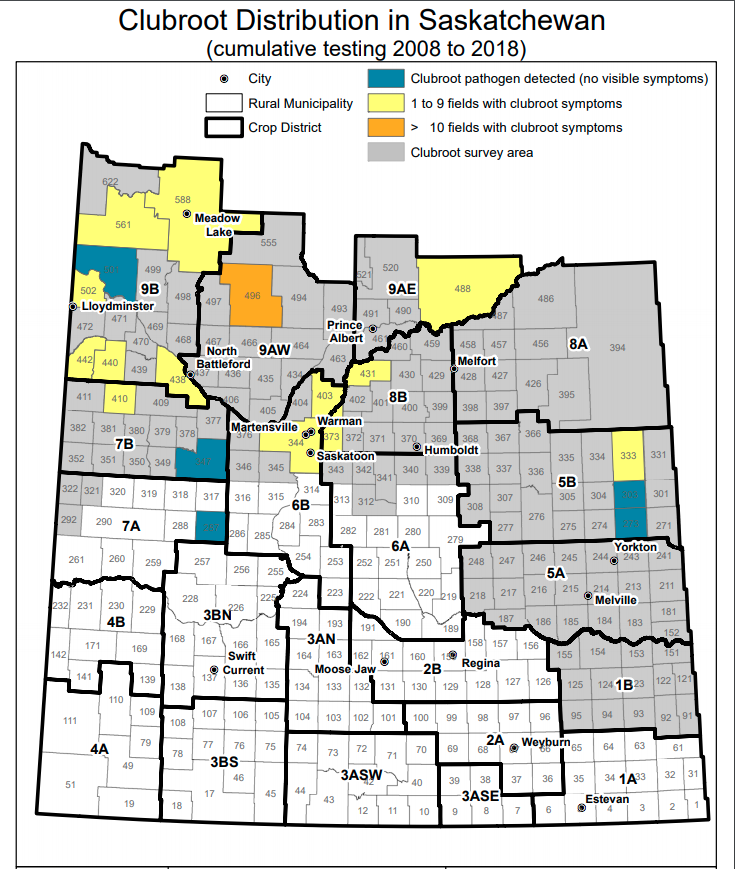
Features
Agronomy
Diseases
Saskatchewan releases 2018 clubroot survey results
The Government of Saskatchewan released a map outlining the rural municipalities (RMs) where clubroot has been identified to date.
January 11, 2019 By Saskatchewan Agriculture
Visible symptoms of clubroot have been confirmed in 43 commercial canola fields and the clubroot pathogen was confirmed in soil samples from an additional three fields that did not have visible clubroot symptoms. These fields were identified through the 2017 and 2018 clubroot surveys or reported to the ministry by producers and agrologists outside of the survey.
“Monitoring the spread of clubroot through surveys is valuable to everyone in the agriculture industry, as it helps the industry make informed decisions around clubroot management,” Agriculture Minister David Marit said. “We consider awareness and education of clubroot to be priorities, as both will help prevent the spread of the disease in Saskatchewan.”
The Ministry of Agriculture, in partnership with SaskCanola and the Saskatchewan Association of Rural Municipalities (SARM), increased its clubroot surveillance efforts in 2018 as a response to the detection of clubroot in two Saskatchewan crop districts in 2017. The purpose of the 2018 clubroot survey was to help both government and industry better understand the distribution of clubroot in the province, and to guide clubroot management and prevention efforts.
Clubroot, a declared pest under Saskatchewan’s Pest Control Act, is a disease that restricts a plant’s ability to obtain water and nutrients from the soil. The key to clubroot management is to keep the pathogen levels as low as possible to minimize the impact on canola yields. A proactive and science-based clubroot management strategy should include the use of clubroot-resistant canola varieties in a minimum of a three-year rotation. An extended crop rotation will help to minimize yield losses while also protecting the effectiveness of clubroot-resistant canola varieties.
“SaskCanola invested in this survey to help farmers understand where the movement of the disease is within the province,” SaskCanola executive director Lisa Horn said. “We continue to encourage growers to remain vigilant about minimizing soil movement and use this new map as a tool in their ongoing management and prevention of the disease.”
Approximately 1,500 fields were tested as part of the survey during the summer and fall of 2018. The landowners of all fields with visible clubroot symptoms or the presence of the clubroot pathogen have been contacted. The locations of these fields have also been shared with the appropriate RM office.
The ministry is working with RMs and SARM to ensure a farmer-driven approach to clubroot management. As part of this approach, the landowners and/or producers of fields with visible clubroot symptoms will be required to develop a clubroot management agreement that fits their production practice and includes science-based clubroot management strategies for infected fields.
All clubroot-infested fields will be monitored by an appointed Pest Control Officer in subsequent years.
The map is available for download.

Related: